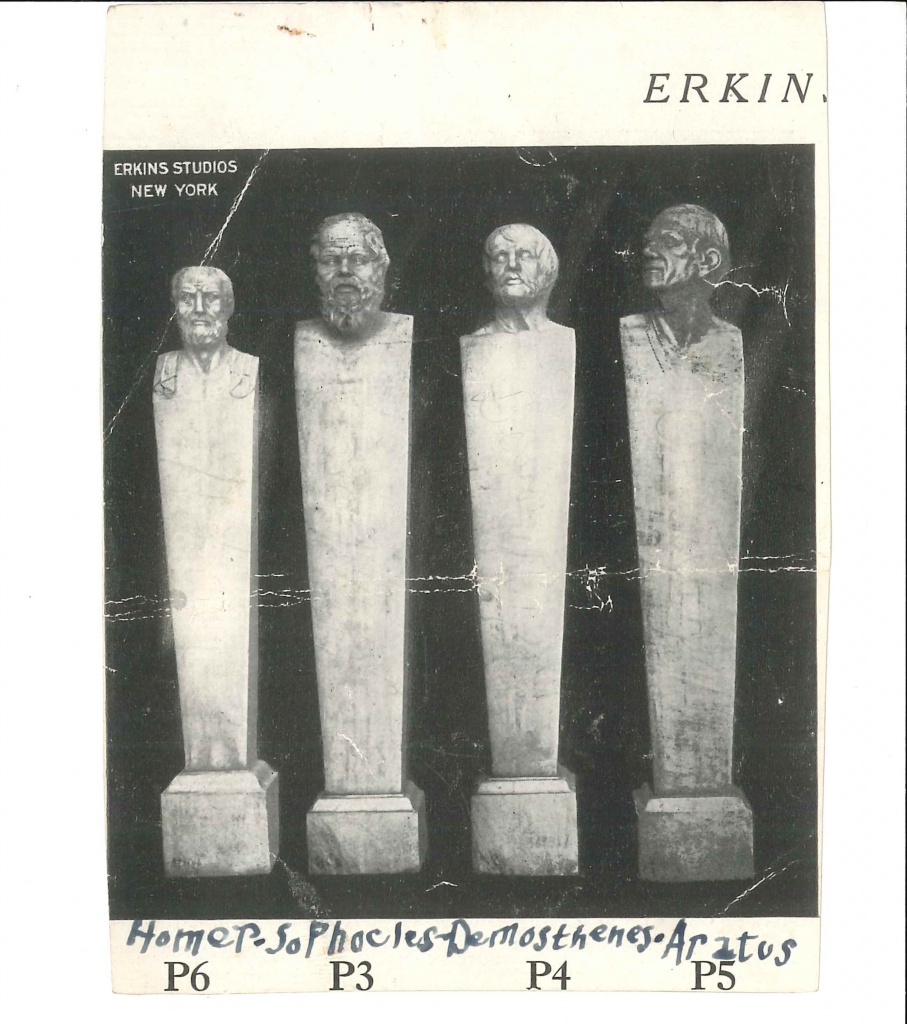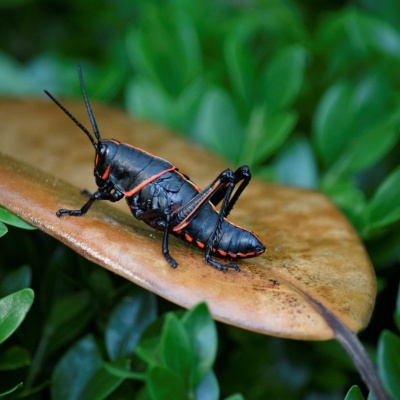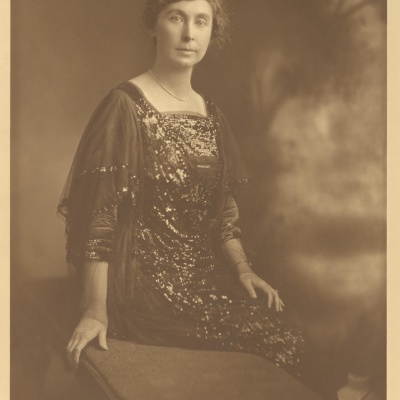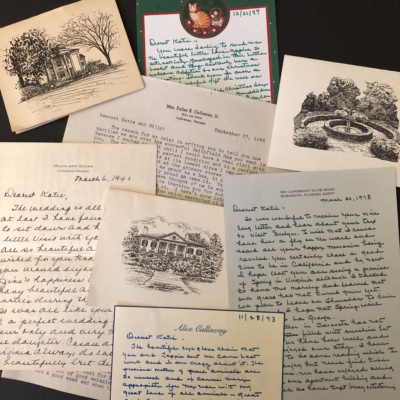Who’s on Third?

An amusing anecdote has been spun over many years about the identity of the statues that terminate several paths in the garden at Hills & Dales. The way that Alice Callaway would sketch the story involved her father-in-law, Fuller Callaway Sr., being mistaken as the subject of each of the various sculptures by a local citizen, who disdainfully remarked that “not a single one looks like him!” Fuller Sr.’s wife Ida recalled it a little differently, writing that a woman thought it was Judge Ferrell, the previous owner of the property, who had been so repeatedly yet inaccurately cast. But if not Mr. Callaway or Judge Ferrell—to borrow a line from a classic movie—who are those guys, anyway? Oh, if only the answer was that simple, for we’ve found that the facts surrounding their true identities have been a bit murky from the very beginning.
“How so?” one might ask — an apt question — though none have ever been labelled. The pair on Lover’s Lane has long been referred to by family, and subsequently us, as Socrates and Plato. However, as is often the case when digging into the past, things are not always how they’ve been told. It became increasingly clear upon further investigation that we had a real mystery and to reach a solution all six “W’s” needed to be unwrapped. That is, not just who or how, but what, when, where and why. This tale is going to make more sense if told in chronological order though, so let’s start with the when.
In December of 1915, an order was placed to The Erkins Studio in New York City for various cast stone pieces to place in the garden surrounding the new home being built for the Callaways at Hills & Dales. Records show that Fuller and Ida sought out professional advice concerning the garden and recommendations ensued that included modest amounts of ornamentation, such as cast stone benches, fountains and statuary, to compliment the design of Sarah Ferrell’s formal masterpiece. In his typical meticulous fashion, Mr. Callaway saved all of the receipts and correspondence pertaining to the estate, a real boon to historical research to be sure, and thus we have the confirmation for this order. However, the statues are listed only by stock numbers, Figures P-3, P-4, P-5 and P-6 to be exact, which is apparently all of the identifying information that was received, considering the contents of a letter sent back to Erkins after the items arrived. It was a request to “…please clip from your catalog the illustrations of figures Nos. P-3, P-4, P-5, and P-6, write on each figure the name of the personage it is intended to represent and mail to us…” The studio immediately complied with a letter and said clipping listing them as Sophocles, Demosthenes, Aratus and Homer, respectively. So imagine our delight upon discovering these records giving the identity of all of them, but delight turned to surprise and shock at the realization that there was no Plato or Socrates. We had nailed down when, only to utter a bewildered “what?!?”
Scurrying back to our archives, we resurrected Ida’s memories from 1929, consoling ourselves with her account of Fuller Sr. saying it was Plato’s head on Lover’s Lane that turned away from courters on the small bench. The clipping showed him as Aratus. Who in the world was that? She also referred to a statue on the third terrace near Sentinel Avenue as Aristotle, yet there was no Aristotle in the catalog illustration; the figure she wrote of was listed as Homer. And the philosopher Socrates that we always spoke of on the east end of Lover’s Lane? Well, in the picture he was named as Sophocles, the ancient playwright. Was this a staff error then, mistakenly calling him Socrates all this time? No, it was confirmed that Alice Callaway wrote of Socrates and Plato guarding each end of Lovers’ Lane more than once.
So why the name changes then, particularly after getting a prompt response from the seller from the start? One can really only speculate at this point as none of the parties above are with us any longer; it goes to reason, however, that Socrates, Plato and Aristotle, the “Big Three” of Greek philosophy, might have been preferred as a triumvirate of sorts, ruling this third garden terrace where they were placed. Perhaps it was deemed that they had more of a shared connection than the other three. “Perhaps” is the best we can do at this point. As for whom Aratus was, there was a choice of Aratus of Sicyon, Greek statesman and leader of the Achaean League or Aratus of Soli, astronomer-poet best known for writing the classic Phaenomena. And so, our garden tour narrative was updated with this new information, sounding quite learned no doubt.
This was where we began to hone in on Demosthenes, and a tool called “the internet” began to unravel everything yet again. Remember Demosthenes? He started out in this saga as P-4, and while it isn’t known where his placement was originally, he now watches over the Ray Garden, an ornamental area Alice developed in the 1950s. This same space had been the location of the family vegetable garden prior to then, and there is reasonable confidence that she moved the statue to his presentspot to compliment her new formal design. When recently working on an article, a computer search was done on this Greek statesman and, lo and behold, the images didn’t look like P-4 at all! What we saw was that P-6 up on the third terrace (ol’ Homer/Aristotle) was, in fact, Demosthenes. So who’s in the Ray Garden? Possibly Homer?
Well, of course more searching was done, but it only created further turmoil. He didn’t turn out to be Homer; in fact there isn’t a Homer statue here at all. Evidently, for many years the figure on P-4 in the Ray Garden was thought by experts to be a likeness of the Roman philosopher Seneca the Younger; that is until a much different, but positively inscribed sculpture of him was found in Rome in 1813. After that, the other bust had the dubious distinction of being called the “Pseudo-Seneca” for quite some time, although many scholars now think that it is of either the poet Hesiod or the playwright Aristophanes. None of which helps us out much, as we still don’t know what to call him.
Also, the correspondence between Erkins and Mr. Callaway doesn’t contain anything about a fifth statue in the garden on Florida Lane. The positive identification as Shakespeare was mercifully easy, but we have yet to learn where from or whence he arrived. A bit of a silver lining did arise in the midst of this conundrum, as family lore was redeemed somewhat by the discovery that P-3 on Lover’s Lane was not Sophocles, but Socrates after all. This was a good thing, because The Erkins Studio went on to strike out completely when P-5 (Aratus/Plato) turned out to probably be a bust of some fellow named Lysimachus. Good grief! Please don’t think us too rude if we ask you to look him up!


